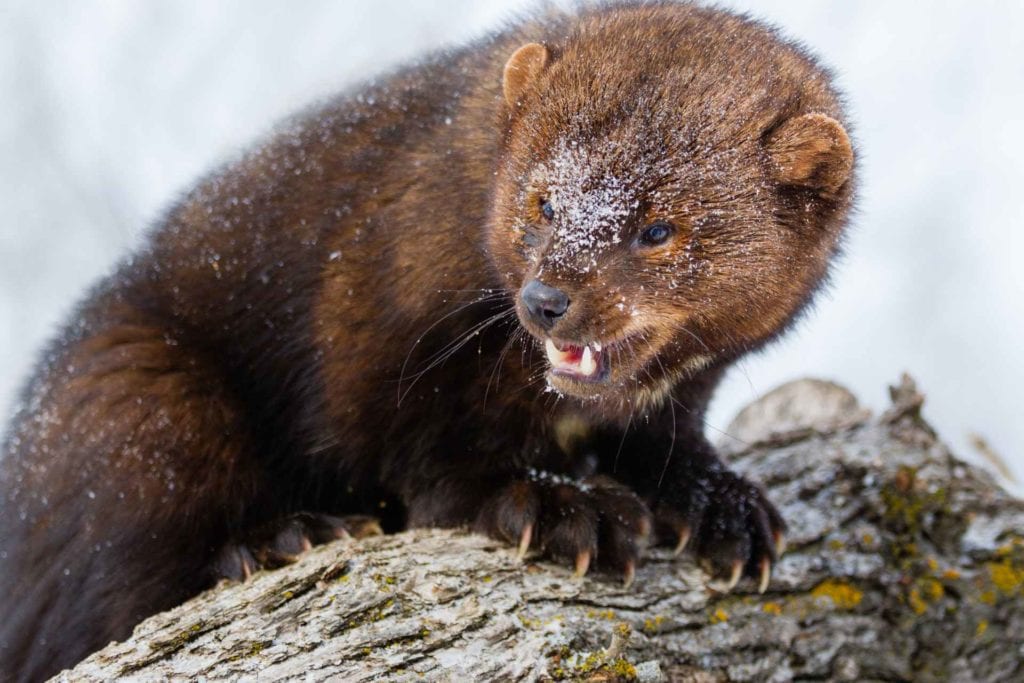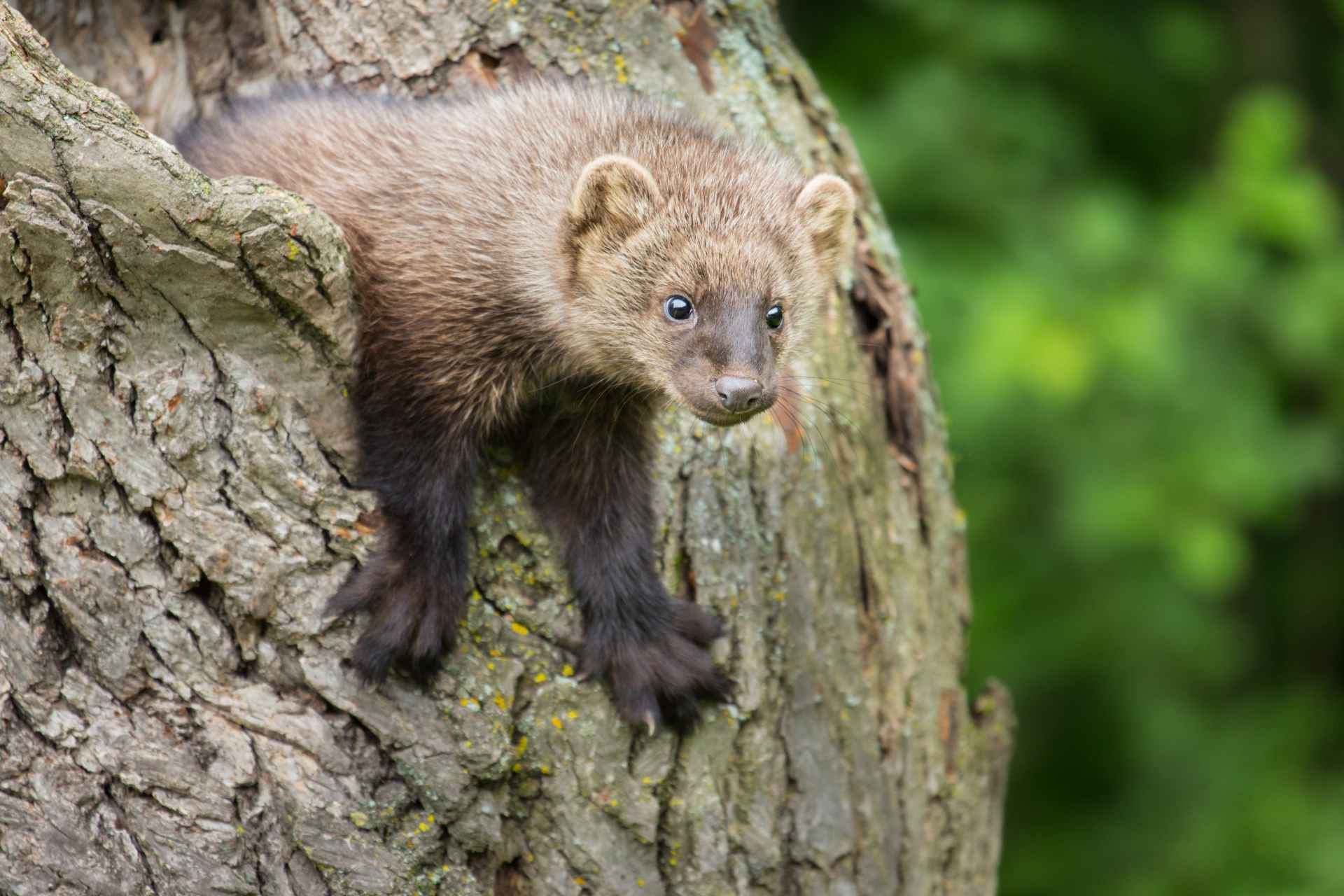BUCKHANNON – People may assume you should look for fishers near water, but despite their name, you are much better off trying to get a glimpse of one in dense forests, especially in trees.
Fishers are forest-dwelling mammals that are members of the mustelid family, which includes ferrets, otters, pine martens and wolverines.
West Virginia State Wildlife Center biologist Trevor Moore said the West Virginia State Wildlife Center is home to one male fisher. He was not 100 percent certain how long this fisher has lived at the center but estimated it has been about three or four years.
“They typically live about seven to 10 years in the wild. They have had some problems in captivity; they are susceptible to a lot of diseases often found in captivity, so they’ve been hard to keep,” Moore said. “We’ve been very lucky that our fisher has done so well.”


Getting a peek at the fisher at the center can be tricky, but it is probably the easiest way to see one up close.
“Fishers are omnivores, so they’ll eat plant and animal material, and they are pretty reclusive,” Moore said. “They’re actually mostly found in old-growth forests, so they really need nice, old ecosystems – big trees for them to really thrive.”
“They are very good climbers, but they do spend a lot of time on the forest floor, scrounging for food,” he added. “Their preferred meat sources are chipmunks, rabbits and mountain hares.”
Moore said fishers are frequently found along the border of the U.S. and Canada, where their natural fur coats keep them warm.
“Typically, they are in the northern parts of the U.S. and Canada, so along the U.S.-Canada border in places like Minnesota and Wisconsin and in that area where it’s nice and cool, so they can grow their very highly prized, very big, thick and fluffy coat in the winter,” Moore said. “That’s when they are most valuable, and they go through a shedding and molting throughout the spring and summer; they get a little raggedy in summer.”
Moore said there have been reintroduction efforts to grow their population because over-trapping has greatly diminished their numbers.
“They used to always be in West Virginia but trapping and habitat destruction really drove them away quite a bit,” Moore said. “Now there’s just a few smaller populations and in West Virginia, we don’t have a huge population here,” Moore said. “There is a trapping season on them; we’re only allowed one animal per trapping season.”
Fishers are solitary creatures who don’t typically interact with other fishers long-term, unless they are in mating season or a mother is raising her pups.
“They’ll form little family groups and mate and then they’ll disperse, especially the males,” Moore said. “Females will give birth in the spring and then shortly after the birth, they come back into heat, so they’ll come looking for males, and they’ll mate again, but then they actually delay the implantation and the fertilization of the embryo until the next spring. They’ll raise their pups through the summer until they’re old enough to leave, like in late fall, and then once spring hits again, they’ll release the sperm and they’ll become pregnant again.”
Moore said fishers also don’t eat fish, contrary to their name, which was given to them by early American immigrants, who compared them to a polecat, or a ‘fiche.’

















